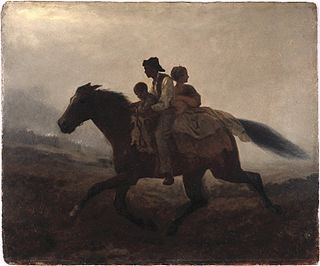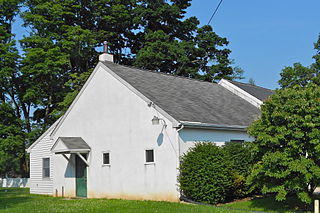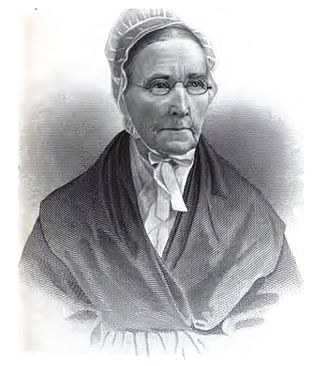
The Underground Railroad was a network of secret routes and safe houses established in the United States during the early to mid-19th century. It was used by enslaved African Americans primarily to escape into free states and from there to Canada. The network, primarily the work of free African Americans, was assisted by abolitionists and others sympathetic to the cause of the escapees. The slaves who risked capture and those who aided them are also collectively referred to as the passengers and conductors of the "Underground Railroad". Various other routes led to Mexico, where slavery had been abolished, and to islands in the Caribbean that were not part of the slave trade. An earlier escape route running south toward Florida, then a Spanish possession, existed from the late 17th century until approximately 1790. However, the network now generally known as the Underground Railroad began in the late 18th century. It ran north and grew steadily until the Emancipation Proclamation was signed by President Abraham Lincoln. One estimate suggests that, by 1850, approximately 100,000 slaves had escaped to freedom via the network.

Levi Coffin was an American Quaker, Republican, abolitionist, farmer, businessman and humanitarian. An active leader of the Underground Railroad in Indiana and Ohio, some unofficially called Coffin the "President of the Underground Railroad," estimating that three thousand fugitive slaves passed through his care. The Coffin home in Fountain City, Wayne County, Indiana, is now a museum, sometimes called the Underground Railroad's "Grand Central Station".

In the United States, fugitive slaves or runaway slaves were terms used in the 18th and 19th centuries to describe people who fled slavery. The term also refers to the federal Fugitive Slave Acts of 1793 and 1850. Such people are also called freedom seekers to avoid implying that the enslaved person had committed a crime and that the slaveholder was the injured party.

Calvin Fairbank was an American abolitionist and Methodist minister from New York state who was twice convicted in Kentucky of aiding the escape of slaves, and served a total of 19 years in the Kentucky State Penitentiary in Frankfort. Fairbank is believed to have aided the escape of 47 slaves.

Thomas Garrett was an American abolitionist and leader in the Underground Railroad movement before the American Civil War. He helped more than 2,500 African Americans escape slavery.

The Coffin House is a National Historic Landmark located in the present-day town of Fountain City in Wayne County, Indiana. The two-story, eight room, brick home was constructed circa 1838–39 in the Federal style. The Coffin home became known as the "Grand Central Station" of the Underground Railroad because of its location where three of the escape routes to the North converged and the number of fleeing slaves who passed through it.

The Boston Vigilance Committee (1841–1861) was an abolitionist organization formed in Boston, Massachusetts, to protect escaped slaves from being kidnapped and returned to slavery in the South. The Committee aided hundreds of escapees, most of whom arrived as stowaways on coastal trading vessels and stayed a short time before moving on to Canada or England. Notably, members of the Committee provided legal and other aid to George Latimer, Ellen and William Craft, Shadrach Minkins, Thomas Sims, and Anthony Burns.

The John Freeman Walls Historic Site and Underground Railroad Museum is a 20-acre (81,000 m2) historical site located in Puce, now Lakeshore, Ontario, about 40 km east of Windsor. Today, many of the original buildings remain, and in 1985, the site was opened as an Underground Railroad museum. The site forms part of the African-Canadian Heritage Tour in Southern Ontario.
John Fairfield was a "conductor" of the Underground Railroad who was extensively involved in operations in present-day West Virginia prior to the American Civil War. He was known for his often unusual and inventive methods for helping runaway slaves escape to free states. He has also been referred to by the name James Fairfield.

Ercildoun, population about 100, is an unincorporated community in East Fallowfield Township, Chester County, Pennsylvania, United States. The hamlet was founded by Quakers and was an early center of the abolitionist movement. In 1985 the entire hamlet, including 31 properties, was listed as a historic district on the National Register of Historic Places. Of these properties two were vacant land, 14 were significant buildings, ten were contributing buildings, and five buildings, built in the 1950s, were non-contributing. The Lukens Pierce House, an octagon house listed separately on the U.S. National Register of Historic Places, is located about half a mile northwest of the hamlet. Ercildoun is one of about ten hamlets in the township, which has no cities or towns, but has 31 sites listed on the National Register. It is one of the larger hamlets, located near the center of the township, and historically among the best known. The city of Coatesville is about 3 miles north.

The Underground Railroad in Indiana was part of a larger, unofficial, and loosely-connected network of groups and individuals who aided and facilitated the escape of runaway slaves from the southern United States. The network in Indiana gradually evolved in the 1830s and 1840s, reached its peak during the 1850s, and continued until slavery was abolished throughout the United States at the end of the American Civil War in 1865. It is not known how many fugitive slaves escaped through Indiana on their journey to Michigan and Canada. An unknown number of Indiana's abolitionists, anti-slavery advocates, and people of color, as well as Quakers and other religious groups illegally operated stations along the network. Some of the network's operatives have been identified, including Levi Coffin, the best-known of Indiana's Underground Railroad leaders. In addition to shelter, network agents provided food, guidance, and, in some cases, transportation to aid the runaways.
George DeBaptiste was a prominent African-American conductor on the Underground Railroad in southern Indiana and Detroit, Michigan. Born free in Virginia, he moved as a young man to the free state of Indiana. In 1840, he served as valet and then White House steward for US President William Henry Harrison, who was from that state. In the 1830s and 1840s DeBaptiste was an active conductor in Madison, Indiana. Located along the Ohio River across from Kentucky, a slave state, this town was a destination for refugee slaves seeking escape from slavery.

Joshua Bowen Smith (1813–1879) was an abolitionist, conductor on the Underground Railroad, co-founder of the New England Freedom Association, and politician, serving one term as a Massachusetts state legislator. He worked as a caterer in Boston, starting his own business at the age of 36.

Austin Bearse (1808-1881) was a sea captain from Cape Cod who provided transportation for fugitive slaves in the years leading up to the American Civil War.
John P. Coburn (1811–1873) was a 19th-century African-American abolitionist, civil rights activist, tailor and clothier from Boston, Massachusetts. For most of his life, he resided at 2 Phillips Street in Boston's Beacon Hill neighborhood. Coburn was one of the wealthiest African Americans in Boston of his time. His property on the North Slope of Beacon Hill had the third highest real property value in an 1850 census. Coburn was heavily involved in abolition-related work within his community, specifically work related to the New England Freedom Association and the Massasoit Guards.

Charles T. Webber was an American painter. Webber created hundreds of paintings during his lifetime, including portraits, landscapes, mythological and historical scenes, as well as genre subjects. He was an active member in Cincinnati’s art scene, founding many artistic groups, and was also a prominent figure in the Underground Railroad. In Cincinnati in particular, Webber was held in high regard due to his artistic achievements.
Sarah Davids Bills Fish (1798–1868) was a 19th-century American suffragist and abolitionist. She has been variously known as Sarah Fish, Sarah D. Fish, Sarah David Bills, and Sarah David Bills Fish.
Wright Modlin or Wright Maudlin (1797–1866) helped enslaved people escape slavery, whether transporting them between Underground Railroad stations or traveling south to find people that he could deliver directly to Michigan. Modlin and his Underground Railroad partner, William Holden Jones, traveled to the Ohio River and into Kentucky to assist enslave people on their journey north. Due to their success, angry slaveholders instigated the Kentucky raid on Cass County of 1847. Two years later, he helped free his neighbors, the David and Lucy Powell family, who had been captured by their former slaveholder. Tried in South Bend, Indiana, the case was called The South Bend Fugitive Slave Case.

Catherine White Coffin, also known as "Auntie Katie", was an American Quaker abolitionist and the wife of Levi Coffin, the unofficial "President of the Underground Railroad". The Coffin home in Fountain City, Wayne County, Indiana, has since been turned into a museum, and was referred to as the Underground Railroad's "Grand Central Station". Catherine and Levi had six children, three of whom did not survive to adulthood. Levi Coffin said "There never was a night too cold, or dark or rainy, for her to get up at any hour, and prepare a meal for the poor fugitives [...] many a time 12, 15, and even 17 sat down," about his wife on their fifteenth wedding anniversary.













